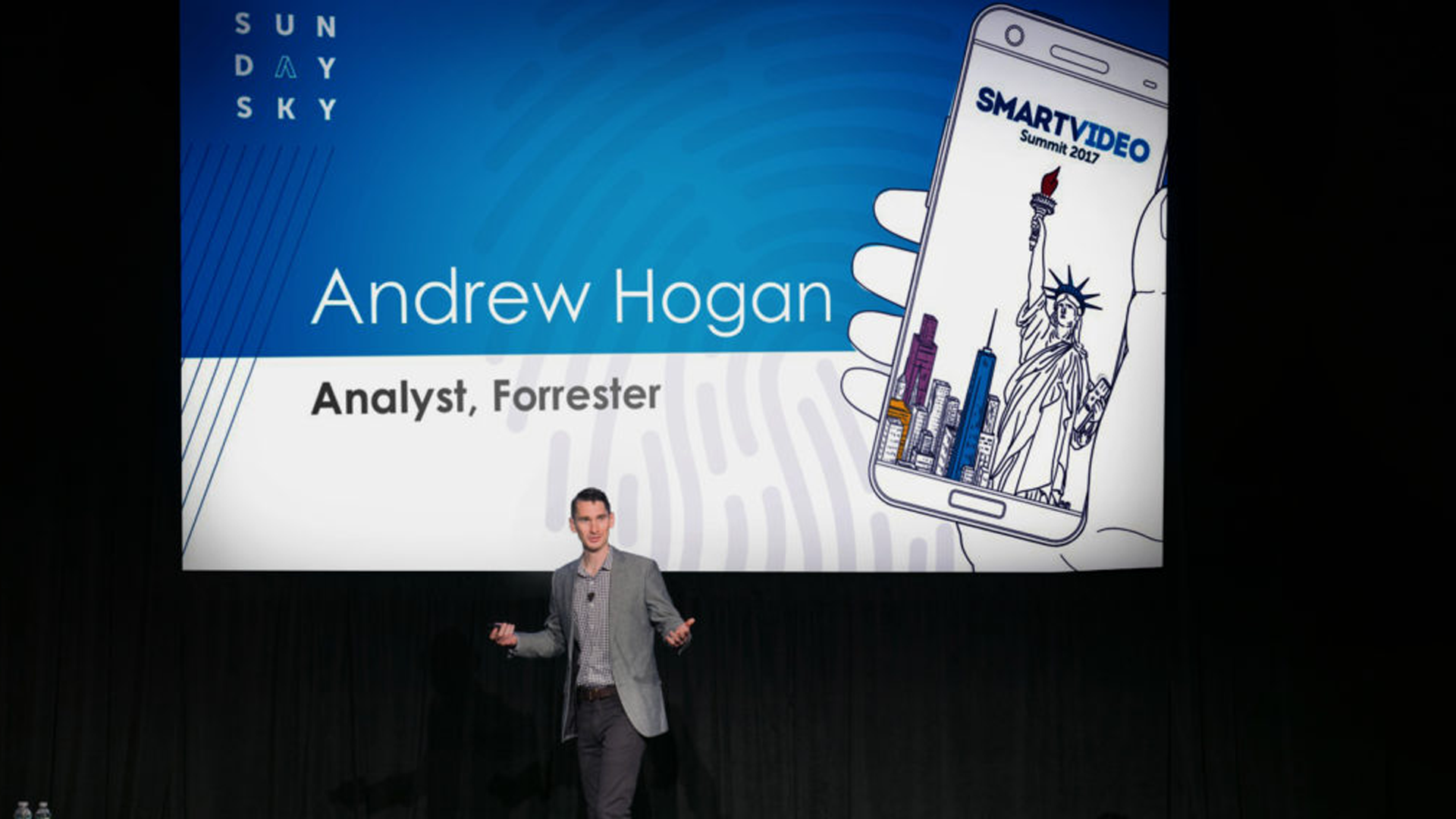SundaySky’s fifth annual SmartVideo Summit kicked off with a keynote from guest speaker Forrester analyst Andrew Hogan. Sharing new research from the April 2017 Forrester Research report Pivot to Person-First Personalization, he spoke about why customer experience professionals are focused on moving toward personalization, and how they should go about it to be successful in today’s market. Andrew began his presentation by first defining what customer experience is:
Customer experience: How customers perceive their interactions with your organization.
He emphasized the importance of perception because, as he pointed out, many customer engagement professionals think they’re creating experiences when they’re actually creating interfaces. So, what does it really mean to be delivering a good customer experience?
73 percent of consumers say that valuing their time is the most important thing for a company to do for them to feel like they had a good experience. An important factor that many customers say must be present is for brands to facilitate emotional bonds with them. Therefore, by saving customers time, and making them feel valued, brands are able to deliver experiences that customers perceive as good. Andrew used these facts as the foundation for why customer engagement professionals are focused on personalizing their customers’ experiences.
Here are the top three takeaways from his session.
1. Personalization is the key to a great customer experience.
Before diving deeper into personalization, it is important to explain why brands are so focused on customer experience in the first place. In this June 2016 Forrester blog by Harley Manning, Customer Experience Drives Revenue Growth, 2016, Forrester discovered that brands who are perceived as customer experience leaders see 5.7 times the revenue growth, across a period of five years, than those who are perceived as customer experience laggards. In the same survey, it was found that not only are existing customers who perceive a superior customer experience with a company more likely to continue doing business with them, but new customer growth increases as well. With business results clearly proving the value of good customer experiences it’s no wonder that brands are focused on it, but why personalization specifically? After presenting this background, Andrew shared his definition of a personalized customer experience:
”A personalized experience is an experience that uses customer data and understanding to frame, guide, extend and enhance interactions based on that person’s history, preferences, context and intent.”
In other words, personalized customer experiences are the perfect marriage of customer data and good service. Andrew then deduced that by personalizing certain aspects of customer communications, brands are able to both save customers time through educated recommendations and build an emotional connection with them by showing them how important they are. Thus, the seamlessness and intimacy of personalized experiences can be directly correlated to good customer experiences.
2. Most brands are still missing the mark with their personalization strategies.
The bar is set pretty high for what consumers expect in terms of personalized experiences today. Andrew categorized brands into three groups in terms of personalization implementation.
- Those who struggle to personalize even website content or messages;
- Those who personalize in a few places but haven’t really changed much; and
- Those who view personalization as the same thing as a good experience.
He went on to explain that most companies fall into the second group, and they tend to be delivering slightly more relevant website and email content than before or deploying retargeted ads but they’re still falling short in many ways. This is a result of these current tactics working in terms of driving business value and brands not being concerned with how how customers are perceiving the tactics. On the other hand, the brands that are leading the way – those that fall into group number three – are doing so by taking a person-first approach to how they interact with their customers.
3. Brands must pivot to person-first personalization to deliver great experiences.
Andrew concluded his session by describing person-first personalization as the act of leading personalization strategies with customer goals in an effort to improve customer experience, and then focusing on the business results that follow after. Andrew clarified that brands that are taking this approach, such as Atlantis Paradise Island and Lyft, start by thinking about the person on the other side of the screen and what exactly it is he or she is trying to accomplish.
Once they figure out the intentions of their customers, brands can build their entire engagement strategies around personalizing their communications to cater to those customers’ behaviors and feelings. In doing this, brands are helping customers to actually feel like individuals, and as a result they perceive the experience as a superb one.







